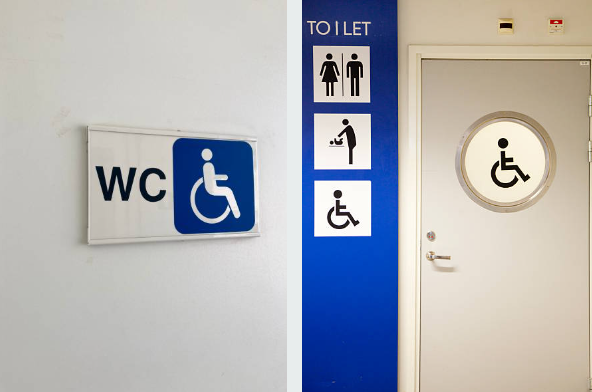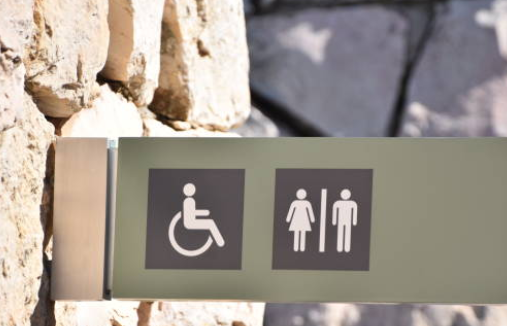How To Get A Key For Disabled Toilets?
Need a key for disabled toilets? This article guides you through obtaining one for easy and comfortable access, especially in community spaces like churches. Identify facilities with the wheelchair symbol, and explore available Grants for disabled toilets in churches for key-accessible modifications. Understanding this process ensures consistent access to the facilities you need, enhancing overall accessibility.
A Guide To Obtaining Keys For Disabled Toilets
Firstly, it’s crucial to look for clear signage indicating whether or not a key is necessary. Keep an eye out for the wheelchair symbol, as this is a common indication that the toilet is designed for disabled individuals.

These signs are usually placed near the entrance of the restroom, making it easier for you to determine if a key is needed.
If you’re still unsure, don’t hesitate to confirm with the staff or management. They will be able to provide you with the necessary information and ensure that you have a smooth experience accessing the facilities.
By following these steps, you’ll be able to navigate disabled toilets confidently and comfortably.
Related Topics: How Many Disabled Toilets Are Required In A Workplace?
1. Look For Clear Signage
Look for clear signage to make sure you don’t miss the key requirement for the disabled toilet.
When you enter a public restroom facility, take a moment to look for any signs indicating whether or not a key is needed to access the disabled toilet.
These signs are usually placed near the entrance or on the door itself. They might have a symbol of a wheelchair or a person with disabilities, along with text specifying the need for a key.
Without clear signage, it can be confusing to determine whether or not you need a key, so always keep an eye out for these indicators.
2. Check For Wheelchair Symbols
The unmistakable wheelchair symbols serve as a beacon of hope for those in need of accessible facilities. When determining if you need a key for a disabled toilet, one of the first things you should do is check for these symbols.

They are usually prominently displayed on signs or doors, indicating that the toilet is designed for use by individuals with disabilities. The presence of these symbols is a clear indicator that the toilet is accessible and does not require a key for entry.
3. Read Text Indicating Key Requirement
To fully appreciate your visit, it’s worth checking for any signage that mentions the requirement of a key for the accessible toilet. Sometimes, there be text indicating that a key is needed to access the disabled toilet.
Look out for signs that state ‘Key Required’ or ‘Ask for Key at Reception.’ These signs are usually displayed near the entrance or on the door of the accessible toilet. If you come across such signage, it’s a clear indication that you will need a key to use the facility.
If you see text indicating the need for a key, it’s essential to inquire about it at the reception or information desk.
4. Confirm With Staff Or Management
Make sure to confirm with the staff or management whether a key is required to access the accessible toilet. Sometimes, the text indicating the need for a key not be clear or not exist at all, so it’s always better to ask someone who knows. They’ll be able to provide you with the most accurate information regarding the key requirement.
When confirming with the staff or management, be sure to ask about any specific procedures or guidelines that need to be followed to obtain the key.
Related Readings: Composting Toilet Problems
5. Carry a Key for Accessibility
Carrying an accessibility key ensures that you can easily access the necessary facilities without any inconvenience. These keys are designed to unlock disabled toilets, providing individuals with disabilities with the freedom and independence they deserve.

By having a key on hand, you won’t have to rely on staff or management to grant you access to these facilities. Instead, you can simply use your key whenever you need to use a disabled toilet, giving you peace of mind and a sense of control over your own needs.
Having an accessibility key also eliminates the need to explain your situation or disability to others. Instead of having to rely on someone else’s understanding or judgment, you can rely on yourself and your key to gain access to the facilities you require.
This can be particularly helpful in situations where staff not be readily available to assist or when you prefer to maintain your privacy.
With an accessibility key, you can confidently navigate public spaces knowing that you have the means to access accessible toilets whenever you need them.
Conclusion
In conclusion, acquiring a key for a disabled toilet is a straightforward process. Assess your need for access, and if necessary, contact relevant authorities like your local council, disability support groups, or facility management. Explain your situation and provide any required documentation to obtain a key. Always carry the key with you to ensure seamless access to disabled toilets when needed.



